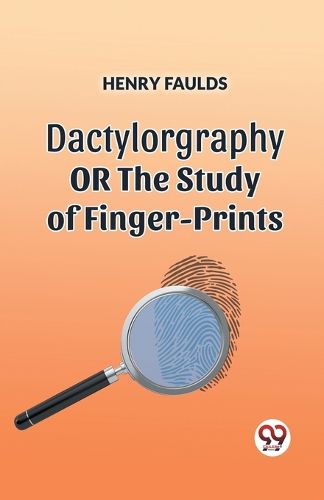Readings Newsletter
Become a Readings Member to make your shopping experience even easier.
Sign in or sign up for free!
You’re not far away from qualifying for FREE standard shipping within Australia
You’ve qualified for FREE standard shipping within Australia
The cart is loading…






This title is printed to order. This book may have been self-published. If so, we cannot guarantee the quality of the content. In the main most books will have gone through the editing process however some may not. We therefore suggest that you be aware of this before ordering this book. If in doubt check either the author or publisher’s details as we are unable to accept any returns unless they are faulty. Please contact us if you have any questions.
"Dactylography or the Study of Finger-Prints" is a seminal work authored by Henry Faulds, a Scottish physician, and missionary, within the past due nineteenth century. Published in the medical journal "Nature" in 1880, Faulds's groundbreaking paper laid the inspiration for the systematic study and application of fingerprint identification in forensic technological know-how. Faulds's paintings brought the concept of the use of fingerprints as a completely unique and permanent means of identification. He argued that the one-of-a-kind ridge styles on human fingertips may want to function a reliable technique for crook identification and forensic research. Faulds also proposed a class gadget for fingerprints, recognizing their individuality and capability for solving crimes. While Faulds's contributions had been to begin with overlooked, the ideas offered in his paper received recognition and have an impact on over the years. Sir Francis Galton and Sir Edward Henry in addition developed and popularized fingerprint identity, with Henry's type device turning into widely followed. Henry Faulds's paintings on dactylography laid the groundwork for modern forensic fingerprint analysis, revolutionizing crook investigations and contributing appreciably to the status quo of fingerprinting as a wellknown forensic device global. His pioneering efforts have left a long-lasting impact on the sector of forensic science, shaping the way regulation enforcement agencies technique criminal identity to at the moment.
$9.00 standard shipping within Australia
FREE standard shipping within Australia for orders over $100.00
Express & International shipping calculated at checkout
This title is printed to order. This book may have been self-published. If so, we cannot guarantee the quality of the content. In the main most books will have gone through the editing process however some may not. We therefore suggest that you be aware of this before ordering this book. If in doubt check either the author or publisher’s details as we are unable to accept any returns unless they are faulty. Please contact us if you have any questions.
"Dactylography or the Study of Finger-Prints" is a seminal work authored by Henry Faulds, a Scottish physician, and missionary, within the past due nineteenth century. Published in the medical journal "Nature" in 1880, Faulds's groundbreaking paper laid the inspiration for the systematic study and application of fingerprint identification in forensic technological know-how. Faulds's paintings brought the concept of the use of fingerprints as a completely unique and permanent means of identification. He argued that the one-of-a-kind ridge styles on human fingertips may want to function a reliable technique for crook identification and forensic research. Faulds also proposed a class gadget for fingerprints, recognizing their individuality and capability for solving crimes. While Faulds's contributions had been to begin with overlooked, the ideas offered in his paper received recognition and have an impact on over the years. Sir Francis Galton and Sir Edward Henry in addition developed and popularized fingerprint identity, with Henry's type device turning into widely followed. Henry Faulds's paintings on dactylography laid the groundwork for modern forensic fingerprint analysis, revolutionizing crook investigations and contributing appreciably to the status quo of fingerprinting as a wellknown forensic device global. His pioneering efforts have left a long-lasting impact on the sector of forensic science, shaping the way regulation enforcement agencies technique criminal identity to at the moment.